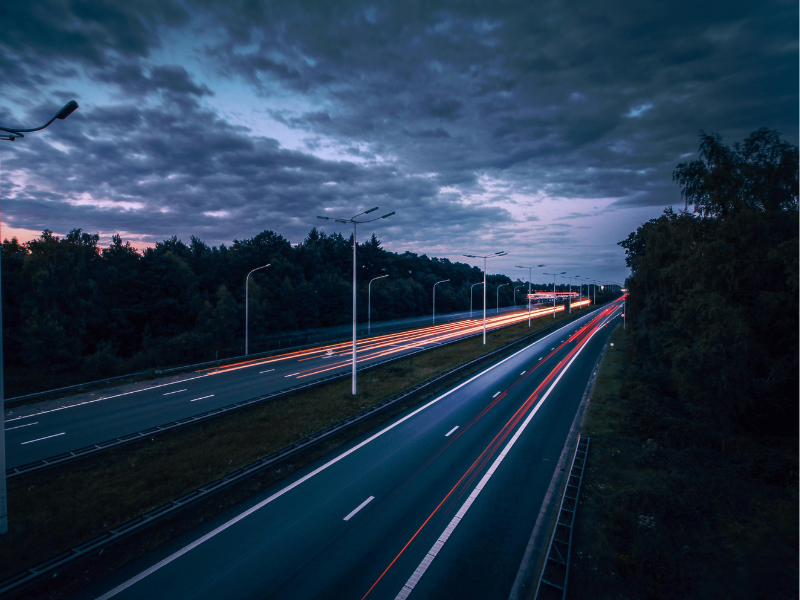SCBA widening E403
24043
From 2025 to 2026
The E403 between Roeselare and Bruges is severely congested every day due to heavy freight traffic, prompting AWV to investigate whether a third lane or a rush-hour lane would best improve traffic flow and safety. TML is supporting this study with traffic microsimulations, a social cost-benefit analysis, and a road safety impact assessment.
The E403 between Roeselare and Bruges is currently one of the busiest traffic arteries in West Flanders. Every day, traffic jams form, resulting in long queues and a lot of rat-running in village centres. Trucks in particular – travelling to and from Roeselare, the Kortrijk/Lille region, the E40, and the port of Zeebrugge – are putting a heavy strain on capacity.
Agentschap Wegen en Verkeer (Roads and Traffic Agency, AWV) wants to make the route safer and smoother. Together with Evolta and Commong Ground, we are investigating two options: a permanent third lane or a rush-hour lane where the hard shoulder is temporarily opened during rush hour. Both alternatives are being fully assessed in terms of road safety, costs and benefits, impact on infrastructure, and effect on the regional road network.
Within this study, TML is responsible for the traffic microsimulations, the social cost-benefit analysis and the road safety impact assessment, so that AWV can make an informed and widely supported choice.
The E403 between Roeselare and Bruges is currently one of the busiest traffic arteries in West Flanders. Every day, traffic jams form, resulting in long queues and a lot of rat-running in village centres. Trucks in particular – travelling to and from Roeselare, the Kortrijk/Lille region, the E40, and the port of Zeebrugge – are putting a heavy strain on capacity.
Agentschap Wegen en Verkeer (Roads and Traffic Agency, AWV) wants to make the route safer and smoother. Together with Evolta and Commong Ground, we are investigating two options: a permanent third lane or a rush-hour lane where the hard shoulder is temporarily opened during rush hour. Both alternatives are being fully assessed in terms of road safety, costs and benefits, impact on infrastructure, and effect on the regional road network.
Within this study, TML is responsible for the traffic microsimulations, the social cost-benefit analysis and the road safety impact assessment, so that AWV can make an informed and widely supported choice.


